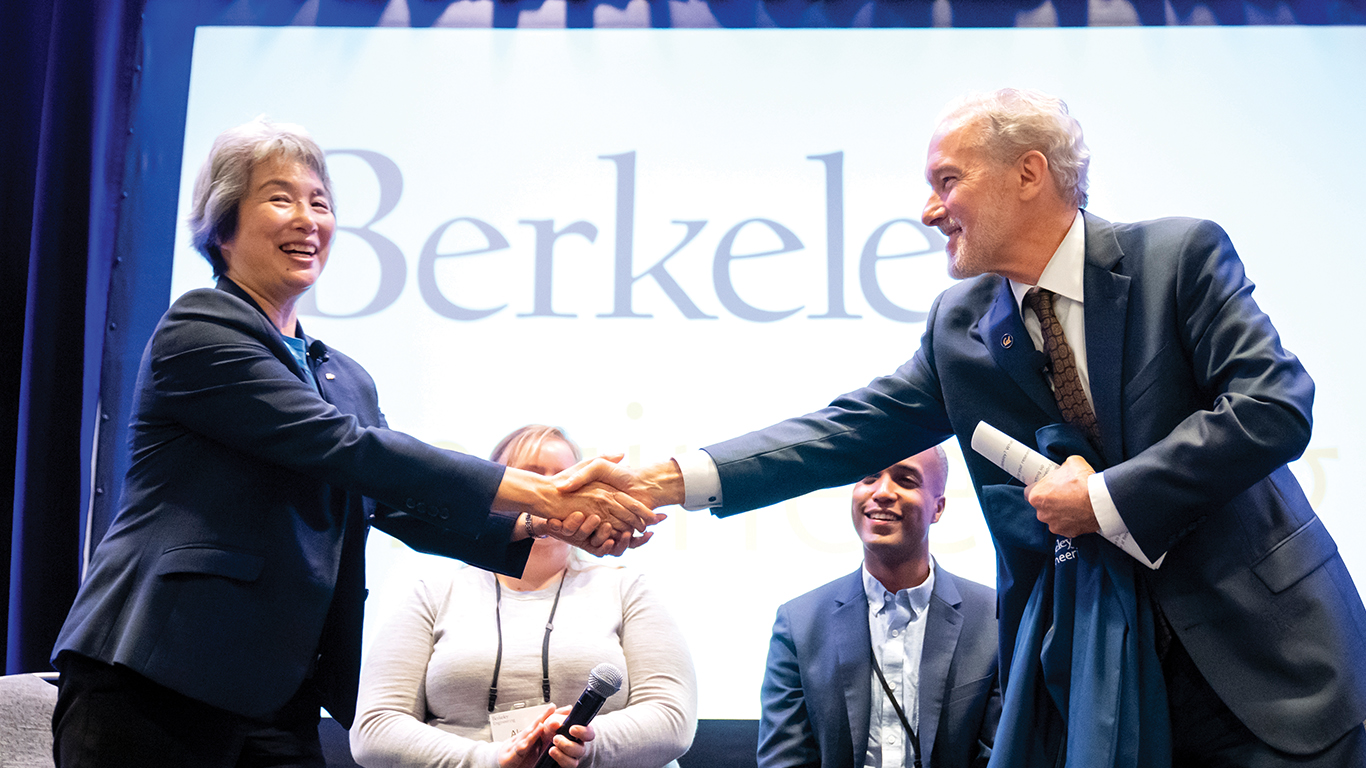 Dean Tsu-Jae King Liu welcomes UC Berkeley Chancellor Rich Lyons at this fall’s Dean’s Society event. (Photo by Adam Lau/Berkeley Engineering)
Dean Tsu-Jae King Liu welcomes UC Berkeley Chancellor Rich Lyons at this fall’s Dean’s Society event. (Photo by Adam Lau/Berkeley Engineering)Innovation with impact
The ascendance of artificial intelligence, recognized by last month’s Nobel Prize in Physics, has led me to reflect on the many technological innovations — including key contributions by Berkeley engineers — that have led to this historic era of transformation.
The seamless integration of electrical engineering and computer sciences at UC Berkeley has enabled our world-class faculty, students and alumni to make pioneering contributions that helped form the hardware backbone of AI.
Our faculty, students and alumni have made pioneering contributions that helped form the hardware backbone of AI.
Examples include computer operating system Berkeley Unix, industry-standard chip simulation program SPICE, Reduced Instruction Set Computing (RISC) architecture for more energy-efficient microprocessors, and the Apache Spark framework that supports big data processing. Those Berkeley innovations were all open source, accelerating widespread adoption in the tech industry.
Such advances enabled dramatic improvements in computational speed, ushering in the Age of AI. Today, electricity demands are increasing exponentially with the proliferation of AI applications. Among the initiatives funded through the CHIPS and Science Act are research programs that address the need for more energy-efficiency in AI hardware. These include the California-Pacific-Northwest AI Hardware Hub, co-led by UC Berkeley and Stanford University, that was recently awarded $16.3 million.
CHIPS and Science Act programs are also creating more demand for a trained workforce, which Berkeley Engineering is addressing with a new undergraduate major in electrical and computer engineering; this, along with a new environmental engineering major, will be one of two new baccalaureate programs launched next year.
But UC Berkeley alone cannot meet the nation’s need for engineering talent. All engineering schools across the country should be empowered to help fill the talent gap, which is why I have volunteered to serve as president of the National Academy of Engineering (NAE). As the sole candidate for NAE president, I expect to start a six-year term in July 2025 and therefore plan to step down as dean at the end of this academic year. An interim dean will be named for the 2025–26 academic year, during which a search will be conducted for a new dean, who will start in July 2026.
The future of Berkeley Engineering is bright, particularly under the leadership of Chancellor Rich Lyons. Our college will no doubt continue to serve as a motor of innovation and entrepreneurship. I look forward to seeing a healthier, more equitable and sustainable world shaped by Berkeley engineers in the years ahead.
Fiat Lux — and Go Bears!

—Tsu-Jae King Liu
Dean and Roy W. Carlson Professor of Engineering

